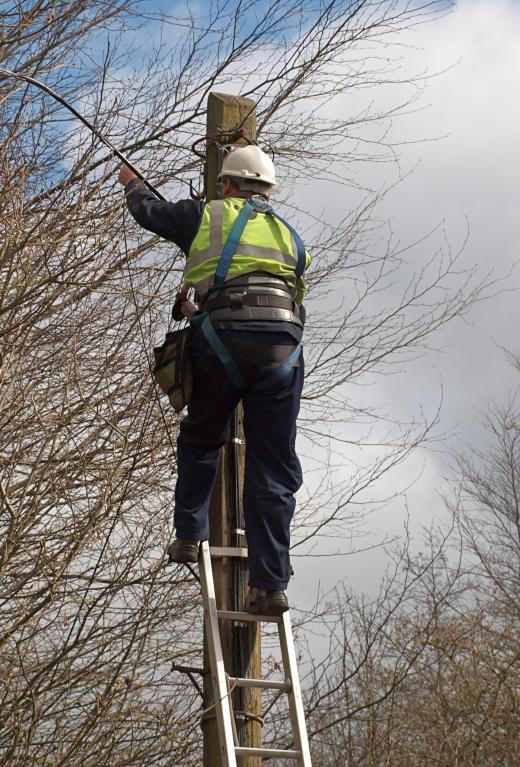High voltage cable is electrical cabling designed for the transmission of high voltage power, which poses some special safety risks because of the amount of energy involved. High voltage electricity can be found in electrical transmission lines for delivery to homes and businesses, as well as certain types of systems with a high voltage draw, like some forms of industrial machinery. Special cable is required to carry the electricity safely and efficiently, with a minimum of risk to the system as well as bystanders.
The construction of high voltage cable starts with the conductors, which can be made from copper and other metals. Each conductor must be separately wrapped in an insulator, and the system may include pressurized oil to limit electrical discharge. This is critical to protect the integrity of the cable itself, as unexpected discharges could damage the wiring and cause electrical problems. The insulated conductors are wrapped in a thick layer of jacket material that protects them from the elements.

Jacketing also protects workers and equipment around the cable. It is critical to prevent direct contact with high voltage cable, as the electricity can be fatal, and the contact could also damage the cable and create a short in the system. Jacketing with thick insulation protects the cable while in use and minimizes the risk of severe electric shock, fires, and other issues that can arise if the conductors are exposed.
Numerous materials can be used for insulation, including a variety of plastics, rubbers, and paper products. The high voltage cable must be carefully constructed and tested before distribution and installation. At install, additional jacketing may be added for extra security if there are particular concerns. Other components of a high voltage system also need to be up to specifications, because if they are not, they could fail during power transmission.
High voltage cable is often marked with warning signs because of the increased risks associated with direct contact. In a situation where there is a problem in a high voltage system, the power must be cut before workers approach it to resolve the problem. Such systems often cut out automatically in response to electrical problems for safety. They also have locking power switching mechanisms to allow workers to lock the system off while they perform maintenance and repairs, so they do not need to worry about a passing worker accidentally activating the system while they are handling it.
Ever since she began contributing to the site several years ago, Mary has embraced the exciting challenge of being a About Mechanics researcher and writer. Mary has a liberal arts degree from Goddard College and spends her free time reading, cooking, and exploring the great outdoors.

